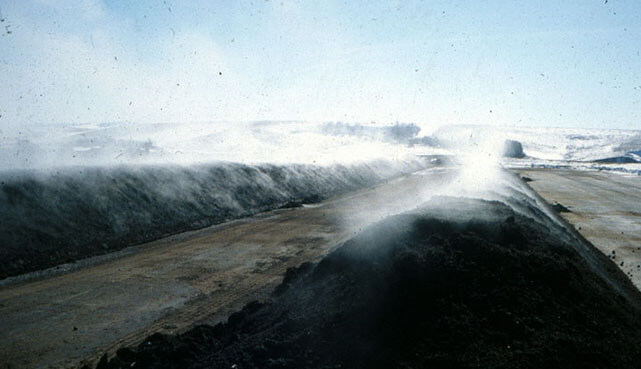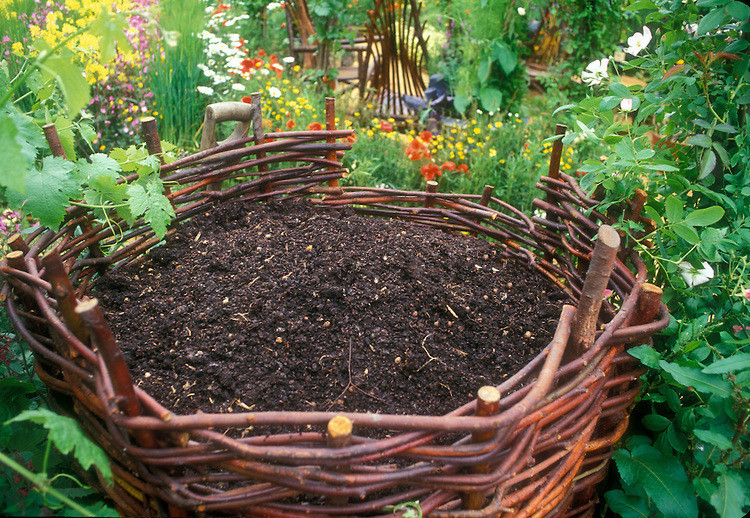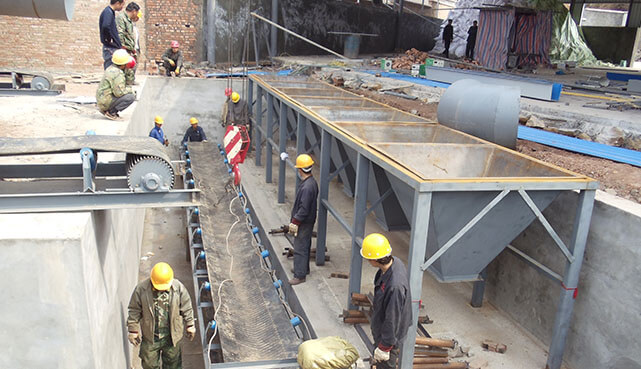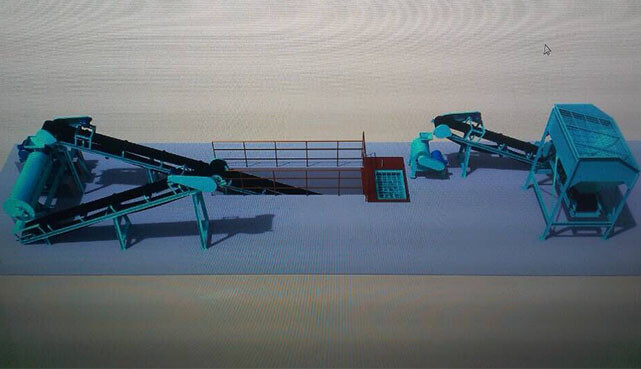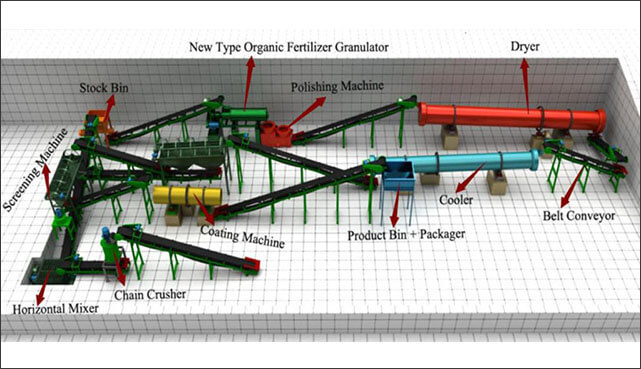Organic fertilizer compost turner was applied to the composting engineering heavily. Since the compost windrow turner marched towards the market, via the test of production practice, technique has been developed and the products have been updating constantly. In order to make our customers have a better understanding of compost turner, we will introduce more information about it to you.
Compost windrow turner, which is manufactured by us, is divided into three types. The following is a list of the conditions of the equipment in the domestic market.
Types of Compost Windrow Turner
As the forerunner of groove type compost turner in domestic, it has had a significant influence.
Groove type compost turner is also divided into two types, one is groove type hydraulic compost turner, the other is groove type lifting compost turner. We manufacture both of them. The groove type compost turner is an organic fertilizer fermentation equipment, which is used for dealing with animal manure, household garbage, sludge, crop stalks and other organic solids, and also can be used in feed fermentation. Groove type hydraulic compost turner can thoroughly compost and turn high-stacked fermentation materials with large production capacity.
With features of high-output, low maintenance and easy-operation, it is becoming an ideal choice for large-scale organic fertilizer production, especially for those who own high-cost land. Our customers can achieve continuous organic fertilizer production and the goal of harmless and recycling treatment of organic wastes by using the groove type compost turner, as it fully add oxygen to the composting raw materials and drain part of water to make them go on the aerobic fermentation.
2. Self-propelled Compost Turner
When the self-propelled compost turner appeared in domestic, it has become the new favorite machine of composting pattern. Our self-propelled organic fertilizer turner is with 4 wheels. The whole body of the compost windrow turner can turn freely. There are 3 models being provided here: 9ALCFYD-2000, 9ALCFYD-2300, 9ALCFY-3200. As we all know, the key process of turning manure to organic fertilizer is fermentation. Traditional fermentation method is to make manure naturally stacked and ret, which has some disadvantages of environmental pollution, long time consumed and more contaminating microorganism, however, the scientific method is that we make full use of the compost turner(the key equipment of producing organic fertilizer)to add microbial stains to animal manure, or other organic solid wastes, then via the machine it can timely lower the temperature of the compost and fill up with oxygen. In this way, original pollutants are turned into green organic fertilizer which soil can easily absorb. It contains various beneficial bacteria spores, which significantly improve the condition of organic fertilizer.
3. Hydraulic Compost Turner
Organic fertilizer compost turning equipment manufactured by us, which also can be called compost windrow turner, is specially designed to traverse trapezoidal windrows, and to mix and stir the organic material when proceeding. These units introduce oxygen into the compost pile helping to speed the decomposition process. Our hydraulic compost turner is designed to process up to 3000 cubic meters of compost per hour depending on the type and size of the turner. With features of low-price, high fermentation rate, high-efficiency and well performance, the hydraulic compost turner is a reliable fertilizer machine in aerobic fermentation and organic fertilizer production.
Our hydraulic compost machine for sale is mainly for fermentation of manure, sludge waste, sugar mill filtered mud, bone meal, straw residue, sawdust and other organic waste. The windrow turners are vital to efficiently producing large volumes of compost, and has been widely used in organic fertilizer plants, sludge dumps, horticulture plantation, and white button mushrooms etc. It aims at harmless and recycling treatment of animal manure, agricultural waste, sludge and industrial organic waste. Make the right choice and your composting runs with the precision of a Swiss watch. Miss the mark and you can likely count on a ton of problems that will cost you time, money and energy.
How to Select the Compost Windrow Turner?
The wide variety of compost windrow turner types, models and features can make the task of selecting the compost turner seems overwhelming. However, the choice narrows substantially after you read our compost windrow turner buying guides. We provide our client with an insight into the world of buying technology and expertise.
● Throughput
To determine the required throughput of the compost windrow turner, divide the weekly volume of compost that must be turned during peak period by the available time for turning. The throughput of a particular turner is determined by its working travel speed and the size of the windrow that it can handle. Larger and more powerful machines generally have greater throughput rates because they process larger windrows.
● Labour
All compost windrow turner required one, and only one operator. Therefore, for a given volume of compost, the labour requirement is determined by the throughput of the compost turner. An exception to the one operator rule is when water is being added from a tank truck or wagon driven by a second operator. The second operator is not needed if the compost turner includes an irrigation system.
● Site capacity
Compost windrow turner that handle wider and, especially, taller windrows accommodate a greater volume of material within a given area.Also considers the aisle space required by the turner. Self-driven turners require less aisle space than towed models.
● Materials
In light of stercararia and the yeast which have a good fiber content and smaller viscosity, it can adopt the compost windrow turner who has the function of strong smash and agitation. Thus, it can save the pre-treatment procedure of mixing and crushing the raw materials which reduces the production process and advances the fermentation rate of materials. To make the materials more uniform and loose.
For the sludge in sewage treatment plant, filtered mud and other colloidal sludge who has the features of viscosity, it should adopt the compost windrow turner with soft pile-turning. Therefore, it makes the water loss more quickly, and then shorten the fermentation time.
● Performance
When we purchase the compost windrow turner, we should see its performance first. To see whether the performance is stable and safe. If it can be done safely, then we can purchase on selection.
Next, we can see the driving position of compost windrow turner. In general, the driving position is driven by one person. The function of the driving position should be complete and stable.
What’s more, the sound of a good set of compost windrow turner should be smaller.
● Maintenance
All turners perform rugged work that causes much wear and tear. Maintenance is a routine chore and expense. Paddles, teeth and augers of rotating shafts and drums require frequent replacement. Fluids, bearings, hoses and filters and other components also demand regular attention and frequent replacement. In considering competing turner models and options, give extra high marks to those with good maintenance and repair histories.
● Costs
Compost turner can be expensive pieces of equipment. Purchase costs increase as the machines grow in size, speed, power and special features. However, consider purchase costs in relation to throughput and capacity. A large turner with a higher price can mean a greater volume of compost or a smaller site. Maintenance and running costs are relatively high for turning equipment and should be factored into any purchase decision. Higher priced models that operate less expensively can be a bargain.
● Transport
If moving a compost windrow turner between remote sites is necessary, the ease of transporting the turner over the road is an important consideration. The transit objectives are to minimize the effort and avoid special road permits. Most manufacturers understand the requirements for transporting equipment and have designed in features like folding or retractable components. Several models are self-trailering; other fits conveniently on a flat bed trailer.
● Details
A machine reliability, efficiency and running costs depend a great deal on the mechanical, structural and operation details- things like how the bearing are protected, galvanised versus stainless steel components, the location of a particular hydraulic cylinder and what happens when the compost windrow turner stalls in the middle of a windrow. These details can be the difference between satisfaction and disgust. They deserve scrutiny and investigation when shopping for a turner. Ask a lot of questions of the dealer, the manufacturer and prior users.
Operating Instructions of Compost Windrow Turner
● Before pile-turning
1. Unable to drive the compost windrow turner on the zone which is more than 5 degrees.
2. Ensure to check whether the parts of screws of compost turner are loose or not. Fastening the loose bolts before starting the machine.
3. Check if the chain and belt of compost windrow turner are loose or not.(It does not contain the moving chain.) To tighten the loose chain and belt. The standard of fastening is when you pressed the chain and belt, it will sag 5mm.
4. Check whether it had added the water into diesel, hydraulic ram, diesel water tank and compost turner water tank.
5. Check whether the batteries have electricity.
● In the process of pile-turning
1. Check if the materials had brick, stone, iron, glass and etc sundries. Check whether the roadway is smooth or not and check if the material pile width is more than the width of the running tires. If exceed the above requirements, please clean up and then start pile-turning.
2. Driving the compost windrow turner to the material pile. Ensure that the longitudinal centerline of compost turner is aligned with the material pile, and the transverse centerline of compost turner is paralleled to the transverse centerline of material pile.
3. Modulate the accelerator to the idle state. Reduce the roller to the lowest point which is at 3mm from the ground. Turn on the switch of hydraulic clutch and set the accelerator to the maximum, then shift the forward gear, start turning with the first gear.
4. In the process of pile-turning, it cannot stop the car. And it is strictly prohibited that standing people in front and behind of compost windrow turner.
5. At the end of pile-turning, the switch of hydraulic clutch should be turned off. Rising the roller to the highest point, and setting the accelerator to walk normally.
● After pile-turning
1. Cleaning up the materials which is under the compost windrow turner or on the roller.
2. In the light of the specification to maintain the compost turner.
3. Turning off the power switch when the compost windrow turner is not in use.
4. When stopping the machine, it should not switch off the motor immediately. Reduce the accelerator to the idle state first, and switch off the motor after a minute.
Range of Application of Compost Windrow Turner
1. The work site must be smooth and solid. Within the operational areas, it shall not have the male and female face which is more than 50mm.
2. Strip-type stockpile: It cannot be over-width dredging, the height can be increased less than 100mm appropriately and the length is unlimited.
3. At each end of the material pile, leaving a vacant lot of no less than 10 meters which is convenient to veer. The interval of material pile should be more than 1 meter.
4. This machine is just a fertilizer mechanical device of pile-turning. It cannot be used as the running vehicle or load-carrying vehicle.

